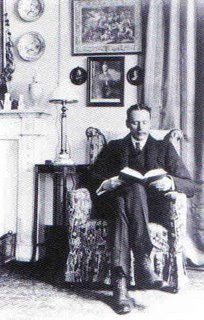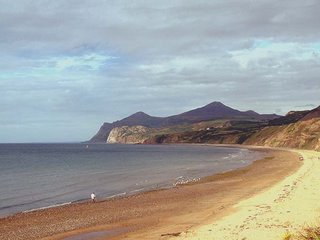James Denney Biography: Review
James Gordon’s biography of James Denney plugs a gap that has frustrated serious students of Scottish Evangelicalism. While the laudatory biography of 1918 may have satisfied men in its time, it was no more a portait of the real man than the Wedgewood Moody and Sankey on the windowsill of the Kensit Library in LTS are of them. Gordon has used both Denney’s published works and his unpublished manuscripts (manuscripts never used before) to produce a rounded portrait of a scholar and theologian who was a real human being, not a plaster saint. In the first two chapters we are introduced to the influences that moulded Denney’s thought, the ultra-conservatism of the Reformed Presbyterian Church of his childhood and the radicalism that he encountered at university in Glasgow. Then we are treated to a thoroughgoing examination of Denney’s time as a student in the Free Church College, Glasgow, including his publication of a pamphlet against one of his lecturers! It is a brave man who does that! For the first time Gordon has given those of us who do not have access to this rare work a sight of what the young James Denney thought of Henry Drummond’s views. We were heartened to see that he agrees with what we have said about them!
But Gordon does not hide Denney’s views about Scripture. In the appendix we have what Gordon believes to be the original of Denney’s Chicago lecture on Scripture, which caused an outcry when first delivered, and which, when the Chicago lectures were published as ‘Studies in Theology’ (London, Hodder and Stoughton, 1894), was entirely re-written. Denney actually denounces inerrancy in this lecture; “This Protestant doctrine of inspiration is literally the most stupendous example on record of lying for God; of deliberately shutting the eyes to the most palpable and obtrusive facts” (P. 242).
Gordon is careful throughout his book to let Denney speak for himself and not put words into his mouth. So we have a warts-and-all portrait here, a picture of a man who was fallible, sometimes unorthodox, but intensely interesting - far more so than suggested by Walker’s biography. Gordon shows us the Denney who wrote the letters that fill two bulky volumes. He also shows Denney the preacher, the man whose expositions of 2 Corinthians and Thessalonians have an honoured place in the Free St. George’s Library. Congratulations, Dr. Gordon, on a job well done; your book has already joined Denney’s on our shelves! Our only complaint is that which we feel again and again, Why, oh why, must important books like this be issued only in paperback? This is the sort of volume for which a good cloth binding was intended!
G. N. CharmleyEditor.
Labels: Books, James Denney





